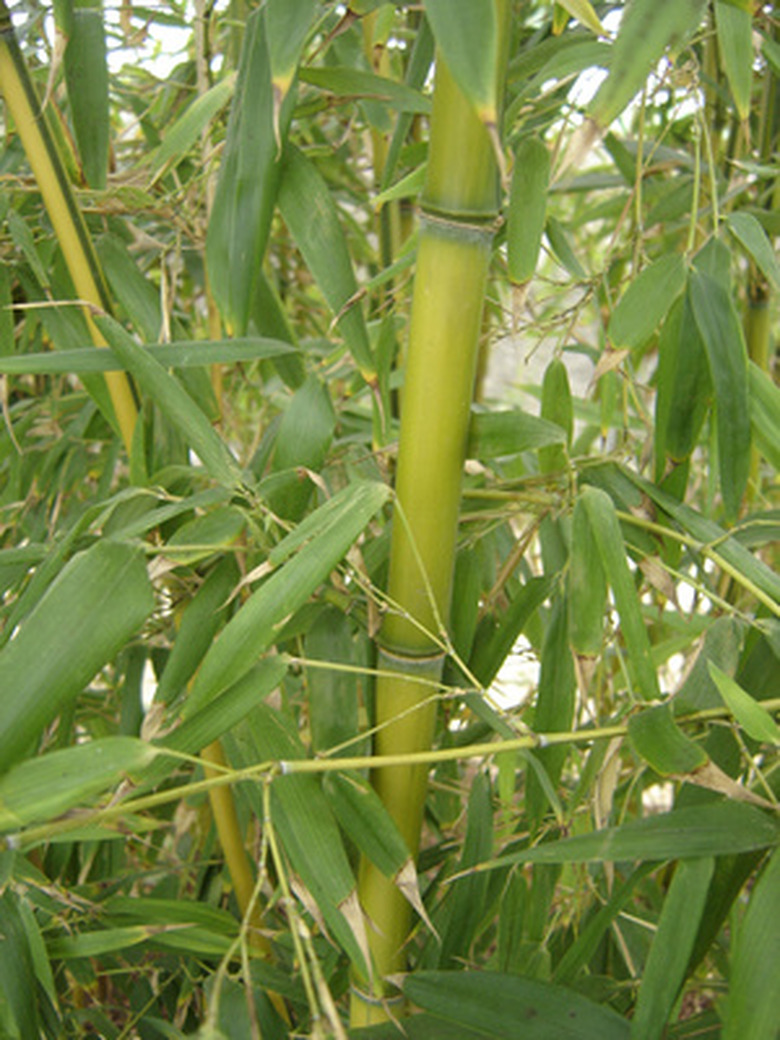Growing Bamboo In South Dakota
Things Needed
- Shovel
- Bamboo plant
- Water
- Mulch
- Stiff garden wire
- Autumn leaves
- Slow-release nitrogen fertilizer
While South Dakota's cold climate–primarily encompassing USDA hardiness zone 4–might seen inhospitable to the delicate bamboo, the American Bamboo Society reports success growing cold-hardy bamboo in the northern states of hardiness zone 4. To successfully grow bamboo, South Dakota gardeners must select a cold-hardy bamboo cultivar and provide adequate winter protection. Their reward will be a backyard grove of green bamboo canes. Purchase cold-hardy bamboo in the spring to get the plant established before wintertime.
Step 1
Select a site that offers your bamboo plant full sun and protection from wind.
Step 2
Dig a hole twice the size of the plant's root ball. Remove rocks, roots and weeds from the hole.
- While South Dakota's cold climate–primarily encompassing USDA hardiness zone 4–might seen inhospitable to the delicate bamboo, the American Bamboo Society reports success growing cold-hardy bamboo in the northern states of hardiness zone 4.
- Select a site that offers your bamboo plant full sun and protection from wind.
Step 3
Pull your bamboo from its container and break the root ball apart with your fingers. Gently unwind the roots before planting.
Step 4
Place the bamboo in the hole so it sits at the same depth as it was planted in the container. Back-fill the hole with soil to finish planting your bamboo.
Step 5
Water the newly planted bamboo until the ground becomes saturated and the soil compresses around the plant.
Step 6
Mulch the newly planted bamboo with at least 4 inches of organic material. The mulch provides nutrients, offers frost protection in the winter and helps the soil retain water for longer.
- Pull your bamboo from its container and break the root ball apart with your fingers.
Step 7
Continue to water your bamboo. The American Bamboo Society advises giving 5-gallon bamboo plants 1 gallon of water twice weekly and giving larger plants more water.
Step 8
Bend bamboo canes over toward the ground for winter protection. Grasping each green cane at its base, bend the cane over so the growth parallels the ground. Bend all canes over in this manner. Then weave a wire (or another cane of bamboo) over and under the canes to hold them in place.
Step 9
Cover the bent bamboo canes with autumn leaves or mulch to offer winter protection. Add several inches of leaves or mulch, but not so much as to block the air flow, which can cause the bamboo to rot.
- Continue to water your bamboo.
- Add several inches of leaves or mulch, but not so much as to block the air flow, which can cause the bamboo to rot.
Step 10
Remove the winter protection in the spring when frost danger passes. Scrape aside the mulch and take off the wire holding the bamboo canes down. Then bend all canes back upright.
Step 11
Fertilize your bamboo twice annually with a slow-release nitrogen fertilizer. Apply the manufacturer's recommended dose for the amount of bamboo you have, scattering dry fertilizer on the ground near your bamboo and watering the plant to work the nutrients into the soil.
